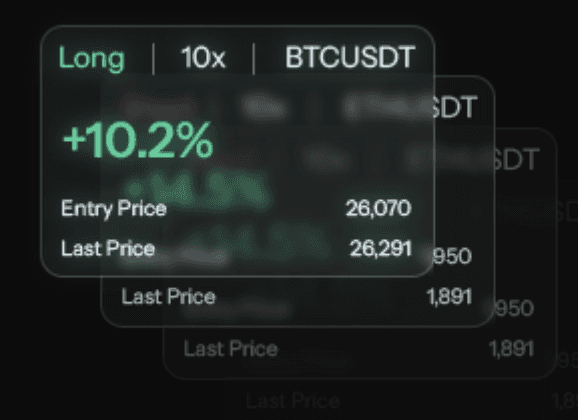Support and Resistance: Unveiling the Market's Hidden Forces in Trading Adventures!
Jun 5, 2023
Welcome, brave traders, to the wonderful world of support and resistance levels! Prepare to embark on a thrilling journey where price levels become your trusty sidekicks in deciphering market movements. In this light-hearted blog post, we'll demystify the concepts of support and resistance, explore their significance in trading adventures, and sprinkle it all with a touch of wit and humor. So fasten your seatbelts and let's dive into the dynamic duo of support and resistance!
Support: Your Trading Safety Net
Imagine support as a cushiony safety net that catches falling prices and prevents them from plummeting further. Just like a superhero swooping in to save the day, support levels represent price zones where buying pressure becomes strong enough to counterbalance selling pressure. It's as if the market whispers, "Hold on tight, my dear traders, for I shall prop you up in times of weakness!"
Resistance: The Price Barrier You Aim to Conquer
Picture resistance as a formidable fortress, guarding against surging prices and challenging the bulls to prove their strength. Resistance levels mark price zones where selling pressure becomes robust enough to halt upward movements. It's like the market playfully taunts, "Think you can break free? Show me what you've got, oh mighty traders!"
Support and Resistance: The Dynamic Dance
Support and resistance levels work hand in hand, performing a mesmerizing dance in the ever-changing market landscape. As price approaches a support level, traders eagerly anticipate a potential bounce-back, seizing opportunities to buy and ride the upward momentum. Conversely, when price nears a resistance level, traders brace themselves for a potential reversal, considering opportunities to sell and take profits.
Support and Resistance: Unveiling the Levels
Support and resistance levels are key areas on a price chart that act as invisible barriers, influencing the behavior of market participants. They reveal the battle between buyers and sellers, shaping the direction of price movements. While support acts as a floor, preventing prices from falling further, resistance acts as a ceiling, capping the upward momentum. These levels hold immense significance as traders strive to understand market dynamics and make informed trading decisions.
Unearthing Support and Resistance Levels
Historical Price Analysis: One popular method to identify support and resistance levels is by analyzing historical price action. Traders scrutinize past price levels where significant buying or selling pressure emerged, creating areas of support or resistance. By examining previous highs and lows, swing points, or areas of consolidation, traders can pinpoint potential future levels where price might react.
Trendlines: Another tool in a trader's arsenal is trendlines. These lines are drawn to connect the higher lows in an uptrend or the lower highs in a downtrend. They help identify potential support and resistance levels as price interacts with the trendline. Trendlines provide valuable insights into the underlying market sentiment and help traders anticipate potential reversals or continuations.
Moving Averages: Moving averages, which smooth out price fluctuations over a specific period, can also act as dynamic support or resistance levels. Traders often observe how price interacts with moving averages, such as the 50-day or 200-day moving average, to gauge potential support or resistance areas. These moving averages serve as a guide to interpret price trends and market sentiment.
Fibonacci Retracement: The Fibonacci retracement tool is a mathematical sequence that identifies potential support and resistance levels based on ratios derived from the Fibonacci sequence. Traders use these levels to anticipate potential price reversals after significant price movements. The Fibonacci retracement tool is like a secret decoder, unveiling hidden levels where price might find support or encounter resistance.
Congratulations, intrepid traders, on unveiling the mysteries of the support and resistance indicator! By understanding these invisible forces, you gain valuable insights into market dynamics and make informed trading decisions. Whether through historical price analysis, trendlines, moving averages, or Fibonacci retracement, traders uncover these levels that shape price movements. So embrace the hidden forces, apply your wit and wisdom, and may support and resistance become your guiding light in the thrilling world of trading. Happy trading, and may the markets unveil their secrets to your advantage!

Support and Resistance: Unveiling the Market's Hidden Forces in Trading Adventures!
Jun 5, 2023
Welcome, brave traders, to the wonderful world of support and resistance levels! Prepare to embark on a thrilling journey where price levels become your trusty sidekicks in deciphering market movements. In this light-hearted blog post, we'll demystify the concepts of support and resistance, explore their significance in trading adventures, and sprinkle it all with a touch of wit and humor. So fasten your seatbelts and let's dive into the dynamic duo of support and resistance!
Support: Your Trading Safety Net
Imagine support as a cushiony safety net that catches falling prices and prevents them from plummeting further. Just like a superhero swooping in to save the day, support levels represent price zones where buying pressure becomes strong enough to counterbalance selling pressure. It's as if the market whispers, "Hold on tight, my dear traders, for I shall prop you up in times of weakness!"
Resistance: The Price Barrier You Aim to Conquer
Picture resistance as a formidable fortress, guarding against surging prices and challenging the bulls to prove their strength. Resistance levels mark price zones where selling pressure becomes robust enough to halt upward movements. It's like the market playfully taunts, "Think you can break free? Show me what you've got, oh mighty traders!"
Support and Resistance: The Dynamic Dance
Support and resistance levels work hand in hand, performing a mesmerizing dance in the ever-changing market landscape. As price approaches a support level, traders eagerly anticipate a potential bounce-back, seizing opportunities to buy and ride the upward momentum. Conversely, when price nears a resistance level, traders brace themselves for a potential reversal, considering opportunities to sell and take profits.
Support and Resistance: Unveiling the Levels
Support and resistance levels are key areas on a price chart that act as invisible barriers, influencing the behavior of market participants. They reveal the battle between buyers and sellers, shaping the direction of price movements. While support acts as a floor, preventing prices from falling further, resistance acts as a ceiling, capping the upward momentum. These levels hold immense significance as traders strive to understand market dynamics and make informed trading decisions.
Unearthing Support and Resistance Levels
Historical Price Analysis: One popular method to identify support and resistance levels is by analyzing historical price action. Traders scrutinize past price levels where significant buying or selling pressure emerged, creating areas of support or resistance. By examining previous highs and lows, swing points, or areas of consolidation, traders can pinpoint potential future levels where price might react.
Trendlines: Another tool in a trader's arsenal is trendlines. These lines are drawn to connect the higher lows in an uptrend or the lower highs in a downtrend. They help identify potential support and resistance levels as price interacts with the trendline. Trendlines provide valuable insights into the underlying market sentiment and help traders anticipate potential reversals or continuations.
Moving Averages: Moving averages, which smooth out price fluctuations over a specific period, can also act as dynamic support or resistance levels. Traders often observe how price interacts with moving averages, such as the 50-day or 200-day moving average, to gauge potential support or resistance areas. These moving averages serve as a guide to interpret price trends and market sentiment.
Fibonacci Retracement: The Fibonacci retracement tool is a mathematical sequence that identifies potential support and resistance levels based on ratios derived from the Fibonacci sequence. Traders use these levels to anticipate potential price reversals after significant price movements. The Fibonacci retracement tool is like a secret decoder, unveiling hidden levels where price might find support or encounter resistance.
Congratulations, intrepid traders, on unveiling the mysteries of the support and resistance indicator! By understanding these invisible forces, you gain valuable insights into market dynamics and make informed trading decisions. Whether through historical price analysis, trendlines, moving averages, or Fibonacci retracement, traders uncover these levels that shape price movements. So embrace the hidden forces, apply your wit and wisdom, and may support and resistance become your guiding light in the thrilling world of trading. Happy trading, and may the markets unveil their secrets to your advantage!

Support and Resistance: Unveiling the Market's Hidden Forces in Trading Adventures!
Jun 5, 2023
Welcome, brave traders, to the wonderful world of support and resistance levels! Prepare to embark on a thrilling journey where price levels become your trusty sidekicks in deciphering market movements. In this light-hearted blog post, we'll demystify the concepts of support and resistance, explore their significance in trading adventures, and sprinkle it all with a touch of wit and humor. So fasten your seatbelts and let's dive into the dynamic duo of support and resistance!
Support: Your Trading Safety Net
Imagine support as a cushiony safety net that catches falling prices and prevents them from plummeting further. Just like a superhero swooping in to save the day, support levels represent price zones where buying pressure becomes strong enough to counterbalance selling pressure. It's as if the market whispers, "Hold on tight, my dear traders, for I shall prop you up in times of weakness!"
Resistance: The Price Barrier You Aim to Conquer
Picture resistance as a formidable fortress, guarding against surging prices and challenging the bulls to prove their strength. Resistance levels mark price zones where selling pressure becomes robust enough to halt upward movements. It's like the market playfully taunts, "Think you can break free? Show me what you've got, oh mighty traders!"
Support and Resistance: The Dynamic Dance
Support and resistance levels work hand in hand, performing a mesmerizing dance in the ever-changing market landscape. As price approaches a support level, traders eagerly anticipate a potential bounce-back, seizing opportunities to buy and ride the upward momentum. Conversely, when price nears a resistance level, traders brace themselves for a potential reversal, considering opportunities to sell and take profits.
Support and Resistance: Unveiling the Levels
Support and resistance levels are key areas on a price chart that act as invisible barriers, influencing the behavior of market participants. They reveal the battle between buyers and sellers, shaping the direction of price movements. While support acts as a floor, preventing prices from falling further, resistance acts as a ceiling, capping the upward momentum. These levels hold immense significance as traders strive to understand market dynamics and make informed trading decisions.
Unearthing Support and Resistance Levels
Historical Price Analysis: One popular method to identify support and resistance levels is by analyzing historical price action. Traders scrutinize past price levels where significant buying or selling pressure emerged, creating areas of support or resistance. By examining previous highs and lows, swing points, or areas of consolidation, traders can pinpoint potential future levels where price might react.
Trendlines: Another tool in a trader's arsenal is trendlines. These lines are drawn to connect the higher lows in an uptrend or the lower highs in a downtrend. They help identify potential support and resistance levels as price interacts with the trendline. Trendlines provide valuable insights into the underlying market sentiment and help traders anticipate potential reversals or continuations.
Moving Averages: Moving averages, which smooth out price fluctuations over a specific period, can also act as dynamic support or resistance levels. Traders often observe how price interacts with moving averages, such as the 50-day or 200-day moving average, to gauge potential support or resistance areas. These moving averages serve as a guide to interpret price trends and market sentiment.
Fibonacci Retracement: The Fibonacci retracement tool is a mathematical sequence that identifies potential support and resistance levels based on ratios derived from the Fibonacci sequence. Traders use these levels to anticipate potential price reversals after significant price movements. The Fibonacci retracement tool is like a secret decoder, unveiling hidden levels where price might find support or encounter resistance.
Congratulations, intrepid traders, on unveiling the mysteries of the support and resistance indicator! By understanding these invisible forces, you gain valuable insights into market dynamics and make informed trading decisions. Whether through historical price analysis, trendlines, moving averages, or Fibonacci retracement, traders uncover these levels that shape price movements. So embrace the hidden forces, apply your wit and wisdom, and may support and resistance become your guiding light in the thrilling world of trading. Happy trading, and may the markets unveil their secrets to your advantage!

Supercharge your trading game with Market Mapper today!




